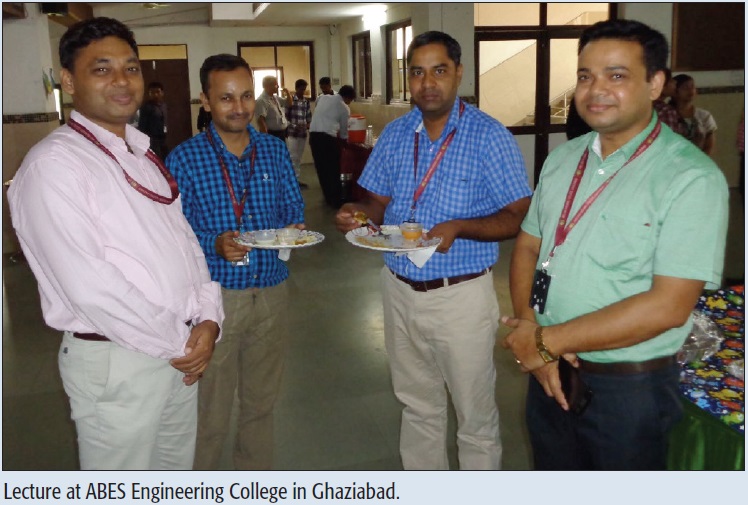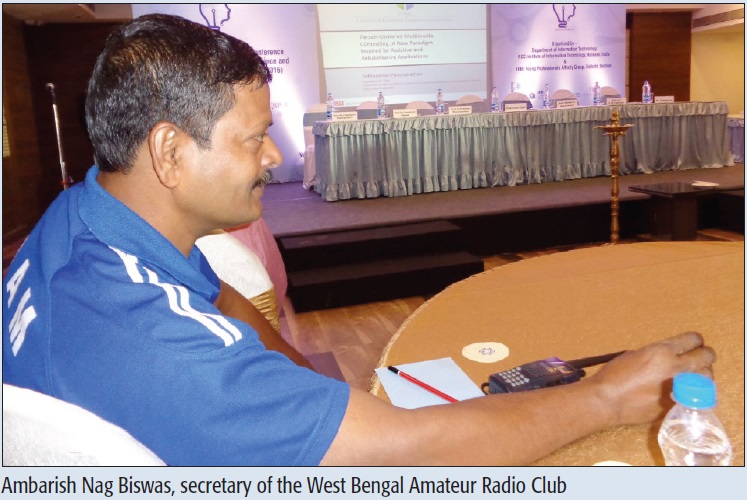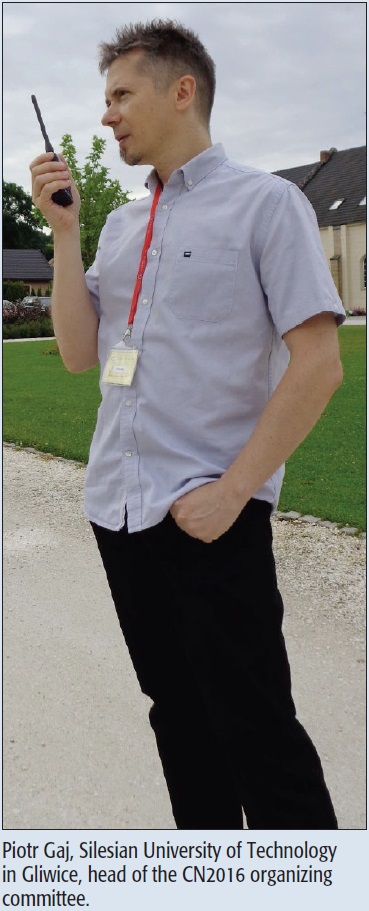

To give some personal contribution to the IEEE ComSoc’s activities ‘in the field’, I decided to make two conference tours in 2016, one in IEEE Region 8 and another in Region 10. The 24th International Conference of Computer Networks (CN2016) was held in Palac Brunow, a rural place in southwestern Poland, while ICRCICN 2016 was in Kolkata, India.
In Poland I performed my complete program (theoretical+ practical) as a ‘one-man-band’ because in that area THERE were no radio amateurs. ThankS to ADI AF-16, my new portable VHF radio transceiver, I was able to reach an FM repeater located at Góra Szrenica, a mountain approximately 40 km away from the conference venue. It was also an opportunity for Piotr Gaj from Silesian University of Technology in Gliwice, the head of the CN2016 organizing committee, to get the personal touch with the Taiwanese product.
After the conference, I spent a few days in Wroclaw to visit local radio amateurs. The first correspondent was Mike SQ6WEM, who provided information on local radio clubs. The next day, Marcin SQ6POL organized my visit to the SP6PWS club location, where I exchanged experiences with local radio enthusiasts. The following day I was in touch with Robert 3Z6AET, who was active in dasr.pl (an emergency radio communication group in that part of Poland). Finally, a friendly meeting was made with Michal SQ6IYV from Politechnika Wroclawska (Wroclaw University of Technology). Polish amateur radio life seemed to be in good condition.
The India tour started with an extended lecture at ABES Engineering College in Ghaziabad, a city close to New Delhi. The lecture was split into two days because I had a plenty of slides. Each day we had a hearty lunch, provided by the school. Everything was very well organized thankfully to Pankaj Sharma, associate professor at ABES (first from right in the photo).
The lecture attracted many female students. As I noticed, Indian schooling is not worried about any decrease of interest for technical education for young women. The workshop was combined with a practical session performed by a skilled radio amateur, Sandeep Baruah, VU2MUE, scientist-E with Vigyan Prasar, an autonomous body under the Department of Science & Technology, Government of India.

My next lecture was with the SSIT Chapter at the IEEE Kerala Section. The chapter’s chair, Satish Babu, and his associate, Ranjit Nair, took care of everything. The session was held at the Science and Technology Museum in Trivandrum, collocated with the local radio club’s office. There were approximately 30 participants, including a few members of the ‘Trivandrum Amateur Radio Society’ (TARS). The museum’s director opened the event.
Unfortunately, due to a tight flight schedule, I spent only 24 hours in the beautiful southern tip of the Indian peninsula. So I continued to Hyderabad to visit the National Institute of Amateur Radio (NIAR). They organized my next full-day session with the GMR Institute of Technology in Rajam, Andhra Pradesh state, where I was accommodated in a very nice guest house. Although the campus of GMR IT was almost three hours by car from the nearest airport, and a few kilometers away from the local village, it had all the needed facilities for students and employees. Back at Hyderabad, I had a nice dinnertime discussion with NIAR’s director Mohan Ram, VU2MYH, and his deputy Jose Jacob, VU2JOS.
The main part of the travel was to the Kolkata Conference, organized by the Department of Information Technology, RCC Institute of Information Technology, and the IEEE Young Professionals Affinity Group. At the airport I was greeted by members of the ‘West Bengal Amateur Radio Club,’ led by its secretary Ambarish Nag Biswas, VU2JFA (Figure 3). He and his boys provided an ad-hoc demo of their radio skills during my tutorial session.
The conference was held at the hotel ‘Stadel.’ The leading person, professor Siddhartha Bhattacharyya, invited me to give another lecture for his students. The second session took place on the premises of the RCC Institute.
The final part of this journey was a full-day seminar at Thapar University in Patiala. Having a long tradition and pleasant campus environment, that was a good place to finish the educational program. Although it was yet another 24-hour travel segment, I took a chance to visit popular street-food stalls, escorted by my host, Professor A. K. Verma. Returning from Punjab state to New Delhi was via a five-hour car ride. As expected, the ‘holy cows’ appeared on the roads here and there, but it was all part of the fun.
Indian education has stayed wide open for the amateur radio. Having a good impressions, I can confirm that there will be more tutorials and workshop sessions in years to come. Our plans include starting an ‘international conference on the amateur radio in education,’ as well as events in the form of ‘summer schools.’ Should you want to collaborate, please get in touch with me.